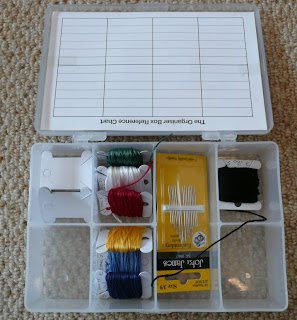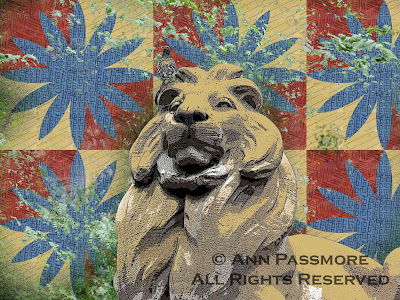NOTE OCT 2011: Since writing this piece, Provocraft, who manufacture the Cricut, have brought a lawsuit against 2 software companies who used to make software for the Cricut. YOU CAN NO LONGER GET SOFTWARE FOR THE CRICUT WHICH ALLOWS YOU TO MAKE YOUR OWN DESIGNS! You can now only use use their cartridges unless you already have the software.
The easiest way of making a stencil using a black and white image like the above (see previous post) is by putting it under a piece of acetate and drawing the outlines with a black permanent pen, making sure there are no areas of detached white (like the nose here). Then cut out the black areas with a craft/Xacto knife and you are good to go...
But, oh noooo, Miss Gadget Girl here has to go the long technical route. About a year ago I bought myself a
Cricut which is used mainly for card making. However, I saw the potential for making complicated stencils for fabric painting.
So, to be able to use the picture I have here with my Cricut machine, I have to convert it to a vector type image. Photographs which can be viewed and manipulated in Photoshop Elements are made up of lots of pixels (bitmap) as you see here in this enlarged view:
A vector type image or graphic is made up of lines, points and curves and includes mathematical equations to calculate the shapes. The advantage of a vector graphic is that you can increase or decrease the size of the graphic without losing any quality whereas you can see above that the more you enlarge a pixelated image the more it loses its smoothness.
To work with vector images you need a completely different software package (the main Photoshop package can deal with vectors but not Photoshop Elements). So to create vector images for my Cricut, I have 2 software packages,
Craft Edge's Sure Cuts A Lot which enables you to use your own graphics with the Cricut and
Inkscape which is a wonderful free graphics package.
I open Sure Cuts A Lot (SCAL) and use the trace option to import the image. This converts the image from a bitmap to a vector. Once this is done the image can be cut immediately but sometimes, if it is a complex image, it requires a fair bit of editing to make it cut a smoother stencil. To minimise editing it is sometimes worth printing out the image and smoothing the edges and cleaning it up with a black ink pen and then scanning it back in.
Although you can edit these images in SCAL, the editing tools are quite basic and I find them quite frustrating so I now take the image into Inkscape and clean it up there. I have to say that if you have never used vector graphics before there is a fair bit to learn and if you are not good on the technical side I suggest sticking with the xacto knife!
Here is a close up of the dog's nose showing the vector points which you can move. When you click on a point you are able to change the curve by manipulating the little 'arms' (see top left of nose). When the image is first traced there are lots of vector points. It is worth deleting some points because the cutter will move to each vector point which makes the cutting less smooth if there are many points:
Here is the image in SCAL after it has been cleaned up:
Now I can connect my Cricut to my PC and cut the dog face out. To make a stencil I cut the image on either acetate, stencil sheets or freezer paper. Freezer paper can be ironed onto fabric and this makes it easy to fabric paint accurately without paint seeping under the stencil.
The vector images that can be used with the Cricut are SVG images (scalable vector graphics) and there are lots of free SVG images on the internet that you can use with the Cricut (if you have SCAL). You don't have to make your own if you don't want to.
In the next post I hope to show you the dog face painted onto fabric.



















































